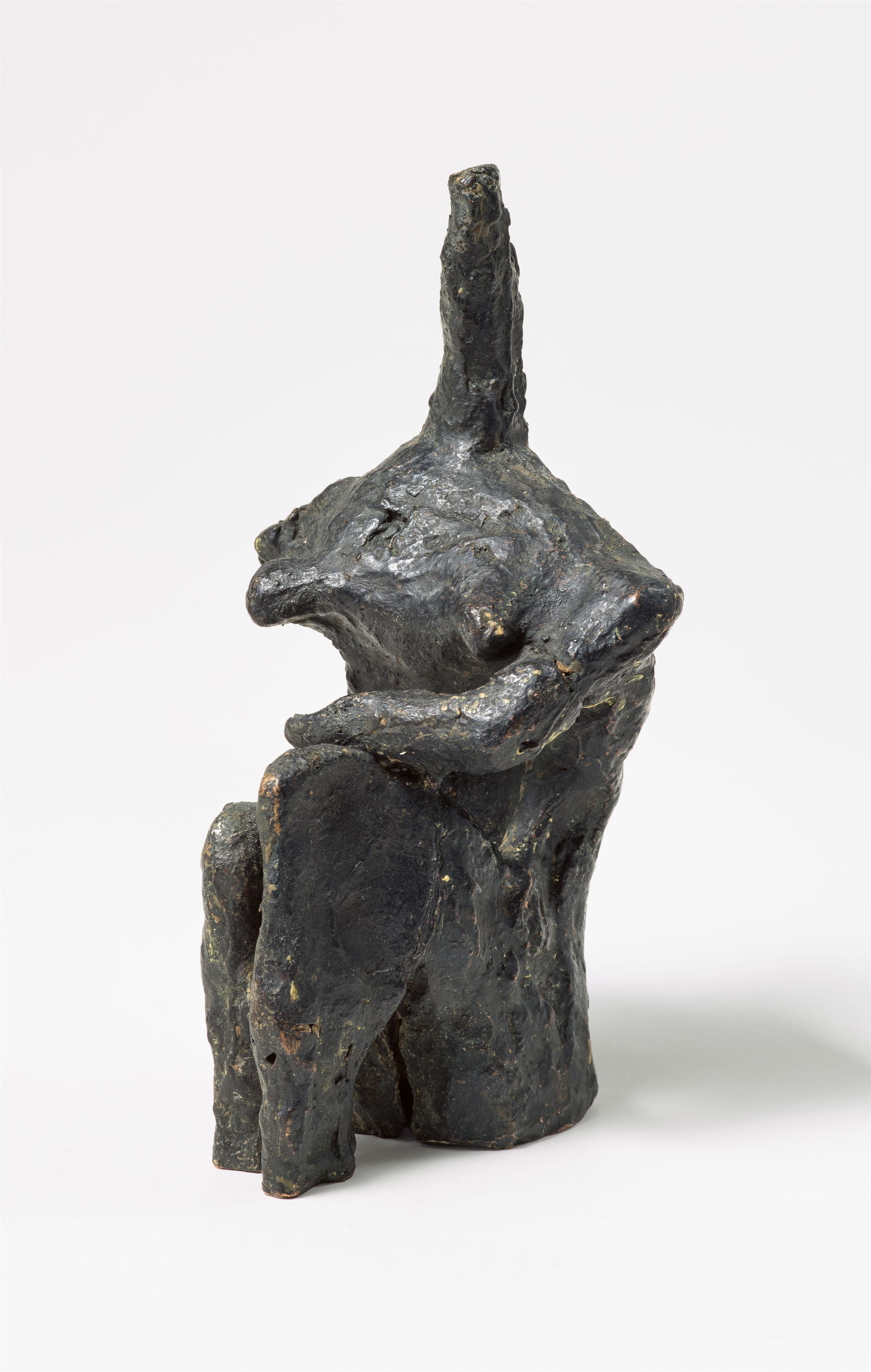Priska von Martin
Zweite Niobe, Entwurf für eine größere Figur
1981
Bronze Height 19.5 cm. Unsigned. - Olive- anthracite-coloured patina.
Initially a pupil and later the wife of Toni Stadler, Priska von Martin developed her own distinctive and brilliant, but related archaic formal idiom to artistically capture the physique and psyche of human beings, particularly women. In doing so, she made use of various art forms, such as drawing and sculpture, but in 1968, with her “Rote Mädchen”, she also began to develop a hybrid alternative, a kind of two-dimensional sculpture. Priska von Martin wrote in her journal that the “Rote Mädchen” are “made without inhibition […], driven by pleasure, accompanied by the feeling of the freedom that there is no compulsion to always have to make art” (cited in Christine Litz, mehr Phönix, weniger Hydra, in: Priska von Martin, exh. cat. Freiburg 2021, p. 33).
“The sculptors of the circle surrounding the academy in Munich [discovered] the possibilities of the complete casting process, from the working of the wax model all the way to the seams, cracks and leftover forms of metal casting. In the mid-1950s, Georg Brenninger and Priska von Martin were the two artists in whose works the traces of their casting remained most clearly visible” (Arie Hartog, “Lebendiges Jenseits der Nachahmung”, in: ibid., pp. 25 f.). The outstanding significance and exceptional status of the sculptor Priska von Martin is revealed by the fact that she was one of just six women sculptors—including Käthe Kollwitz, Emy Roeder and Renée Sintenis, among others—whose work was exhibited among that of the 60 sculptors at Antwerp’s biennial for sculpture in 1957.
Rhythm of form and surface are exceptional features of her work. “While the Hildebrand school emphasised logic and abstraction, Priska von Martin—unattached to the anatomical figure—established an extreme variety of sculptural accents and, in doing so, achieved a remarkable visual dynamism and vitality in the sense of the archaism she held so dear (Hartog, ibid., p. 27).
Through the breadth of their variations, the sculptures offered here provide a glimpse inside her oeuvre, which is quite narrow and whose works are rarely offered for sale.
Certificate
We would like to thank Thomas Weczerek, Munich, for his scientific advice.
Provenance
Estate of the artist; thenceforth family property
Literature
Priska von Martin, exhibition catalogue Freiburg/Bremen 2020/2021, p. 102 with illus. no. 41 (inv. no. p 83/035 Museum für Neue Kunst, Freiburg)

